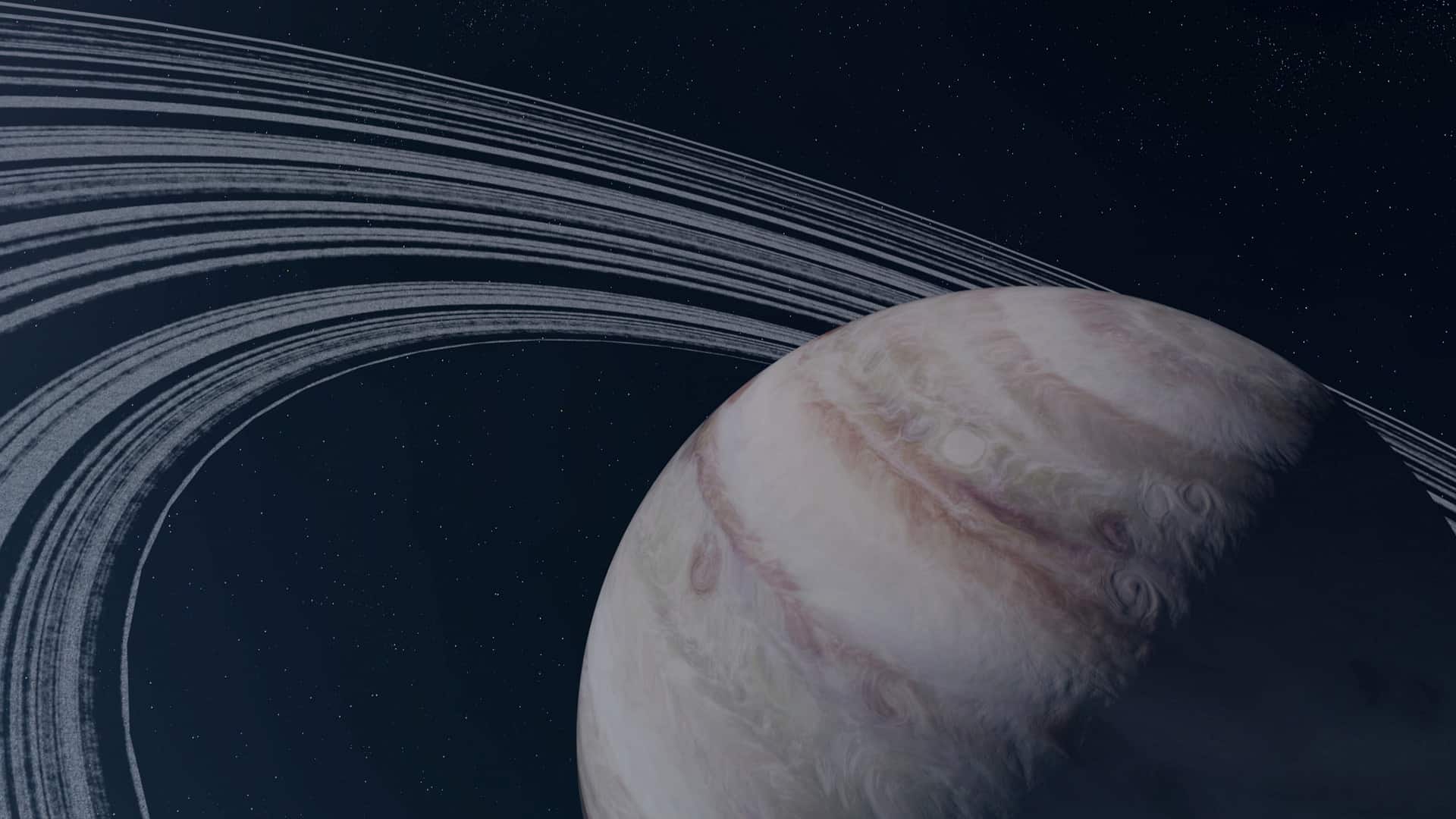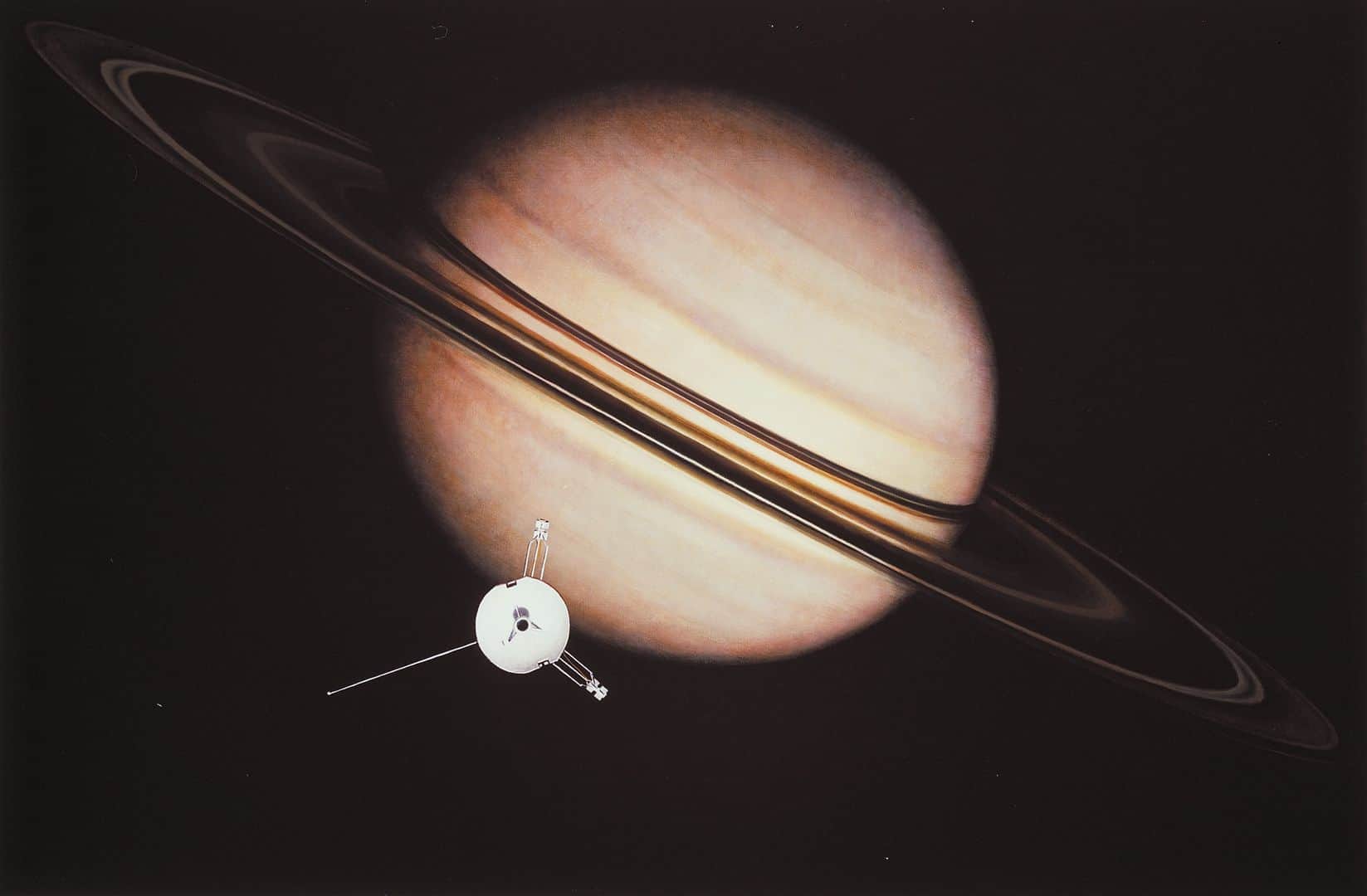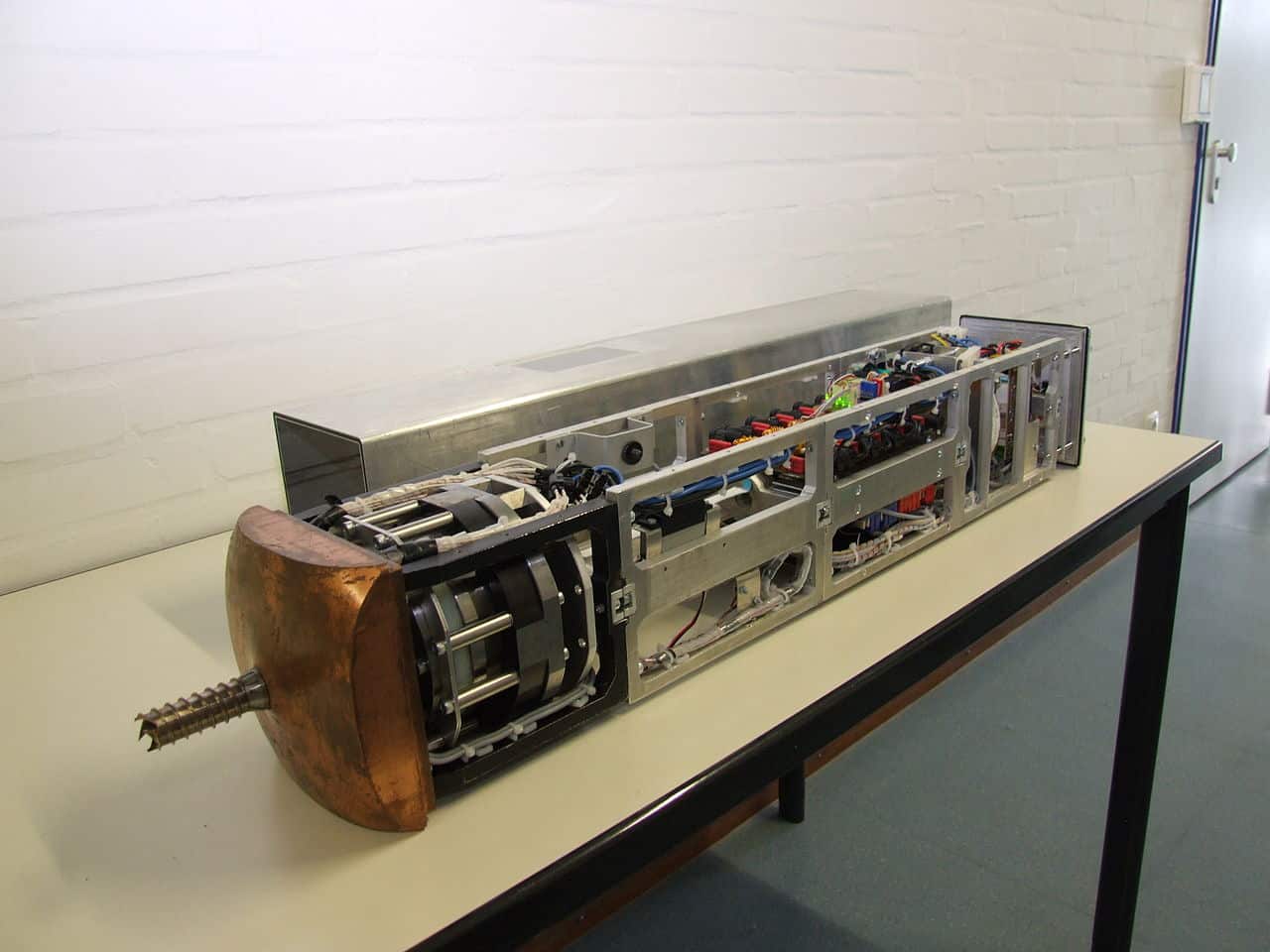
When people hear about Saturn, they immediately start think about its rings. With the most developed rings of any planet in the Solar System, it only makes sense. However, this gas giant holds many other wonders aside from its unique structure. Find out more about its place in the universe with these cool facts about Saturn.
- Saturn measures 60,286 km across at its equator.
- In contrast, Saturn measures only 54,364 km across at its poles.
- The planet spins around its axis at a speed of 9.87 km per second.
- Saturn also orbits the Sun at a speed of 9.68 km per second.
- Hydrogen makes up to 98% of Saturn’s atmosphere.
- Babylonian astronomers first studied Saturn in all history.
- The Ancient Greek astronomer Ptolemy made the first calculations of Saturn’s orbit in history.
- Galileo became the first to see Saturn through a telescope in 1610.
- Galileo also mistakenly thought that Saturn’s rings were a pair of moons distorted through his telescope.
- Christiaan Huygens first saw Saturn’s rings clearly through a telescope in 1659.
- Huygens also later discovered Saturn’s largest moon, Titan.
- Giovanni Cassini pioneered the study of Saturn’s rings in the late-17th Century.
- Cassini also discovered 4 more of Saturn’s moons.
- William Herschel discovered 2 more of Saturn’s moons in the late-18th Century.
- Astronomers discovered Titan’s thick atmosphere in 1944.
- Hindu astrology equates Saturn to the heavenly judge Shani.
- China and Japan traditionally refer to Saturn as the earth star.
- Jewish mysticism associates Saturn with the angel Agiel and the demon Zazel.
- Earth is actually 8 times as dense as Saturn.
- Out of Saturn’s 82 known moons, only 53 actually have names.
Saturn’s density is the least out of all planets in the entire Solar System.
One of the little-known facts about Saturn is that while it is a gas giant, it is extremely thin. At 0.69 grams per cm³, Saturn has less density than water, which an average density of 997 kg per cm³. If you could build a bathtub large enough to fit Saturn, the planet would float like a ball if you place it in the water.
Saturn shares some similarities with Jupiter.
Just like Jupiter, Saturn has an inner mantle made of metallic hydrogen, due to its heat and pressure. Under those conditions, hydrogen turns from a gas into a metallic liquid, which also generates Saturn’s powerful magnetic field.
Compared to Jupiter’s outer mantle, Saturn’s has more helium. Unlike Jupiter’s fragmented core, all evidence points to Saturn’s core existing in one piece.
Saturn generates radio waves of its own.
This is yet another similarity it shares with Jupiter, but Saturn’s radio waves aren’t nearly as strong as those of Jupiter’s. Much like with the planet’s magnetic field, scientists believe that reactions in the metallic hydrogen in Saturn’s depths produces its radio waves.
The heat of Saturn’s interior reaches up to 11,700 degrees Celsius.
This also means that Saturn puts out over twice as much energy as it gets from the Sun. However, scientists still haven’t figured out what causes this heat. Today, the generally accepted theory is that helium sinking through liquid hydrogen in Saturn’s depths. As it sinks, it causes friction with the surrounding hydrogen, generating heat and energy.
Saturn may also experience diamond rain.
Some scientists believe that the extreme heat and pressure inside Saturn could cause carbon to crystallize into giant diamonds. These diamonds would then get blown around by the gas giant’s powerful winds.
Saturn has clouds of its own.
Saturn’s clouds are mostly made from either ammonia crystals at higher levels and ammonium hydrosulphide in lower levels. Water clouds also exist at the lower levels of its atmosphere, eventually producing storms every now and then. However, storms on Saturn are much more powerful than they are on Earth.

A storm called the Great White Spot appears on Saturn once every 30 Earth years.
First spotted in 1876, Saturn’s Great White Spot has since reappeared every 30 years. This also NASA‘s Voyager probes missed the spot when they passed by Saturn in 1980 to 1981, since it didn’t reappear until 1990. After 1990, the Great White Spot disappeared, only to reappear as expected in 2020.
Saturn’s winds are the second-fastest in the entire Solar System.
So far, only Neptune’s winds go faster, with the Voyager probes recording wind speeds of up to 500 meters per second. That said, scientists still haven’t ruled out the possibility of winds going even faster on Saturn. This is definitely one of the facts about Saturn to watch out for.
Saturn’s moon Titan is sometimes described as a planet-like moon.
Titan measures 80% bigger than Earth’s Moon, and 40% bigger than the planet Mercury. This greater size gives Titan a stronger gravity compared to most moons, allowing it to keep a thick atmosphere.
Titan’s atmosphere is primarily made from nitrogen, while also including methane and ethane. This, in turn, creates lakes of hydrocarbons such as those that make up gasoline and other fuels on Earth onto Titan’s surface. This also makes Titan unique, as the only other body in the entire Solar System aside from Earth with liquid bodies on its surface.
Titan might have life of its own.
This may sound like one of the unlikely facts about Saturn, but scientists believe that its moon Titan might hold life based on certain compounds in its atmosphere. The presence of these compounds can easily trigger basic chemical reactions that helped primitive life forms evolve. While it may not be a direct evidence of life, these compounds still have the potential to create it.
Titan also adds plasma to Saturn’s magnetic field.
The moon lies only inside the outer edge of Saturn’s magnetic field. As a result, it has constant exposure to solar wind, , which ionizes the outer edge of the moon’s atmosphere and breaks some of them off from the moon’s gravity. In turn, these particles get caught in Saturn’s magnetic field and drawn closer to the planet in the form of plasma.
Saturn’s moon Enceladus is almost completely covered by ice.
Since it’s covered by ice, Enceladus is one of the most reflective bodies in the entire Solar System. The large amounts of ice on Enceladus also leads scientists to theorize that Enceladus could actually have a composition similar to that of a comet. The existence of ice volcanoes on the moon also adds more weight to this theory.

Enceladus may also have life.
The abundance of ice in Enceladus also means plenty of water, which often indicates life. Aside from these ice sheets, scientists also consider the possibility of an underground ocean of water lying 10km underneath Enceladus’ south pole.
In 2018, the Cassini probe also confirmed the presence of complex organic compounds in the gases released by Enceladus’ ice volcanoes. While ordinary chemical processes could have produced them, scientists haven’t ruled out the possibility of life on Enceladus just yet.
Scientists think Enceladus may have an effect on Saturn’s radio waves.
Scientists theorize that the water vapor that Enceladus’ volcanoes dump into space alters Saturn’s radio waves. The static electricity charging the water vapor produces a slight effect on the planet’s magnetic field. While the effect may be subtle, it’s enough to create a slight discrepancy between the planet’s rotation and its radio broadcasts.
Saturn’s rings are the most famous part of the planet.
Other gas giants may have rings, but Saturn’s rings are the most visible and best-developed out of them all. The ring’s inner edge lies around 6,630 km away from Saturn, extending outwards another 114,070 km into space. Scientists have also learned that water ice makes up most of the rings, along with various organic compounds.
Aside from these elements, carbon from meteors also lines the crystals that make up the rings. The different shades between one set of rings and another depend on the rings’ water content.
Scientists still wonder where Saturn’s rings came from.
Its multi-colored rings may be one of the most well-known facts about Saturn, but no one knows for sure where they came from. Today, there are two main theories on the origins of Saturn’s rings. The first theory suggests that the rings formed from the fragments of a destroyed moon.
Meanwhile, the second theory, claims that the rings came from leftover gas and dust when Saturn first formed. Over time, they fell into Saturn’s gravity and eventually created the planet’s rings.
Some of Saturn’s moons influence the planet’s rings.
Scientists have learned that Enceladus’ ice eruptions add more water ice to the planet’s rings. Meanwhile, the gravity fields of the moons Pandora and Prometheus also act as counterweights that keep the rings stable.
The Pioneer 11 space probe became the first to fly by Saturn.
In 1979, Pioneer 11 came as close as 20,000 km of Saturn’s atmosphere. The probe managed to take several photos of the planet and its moons, but the resolution was very poor. It did, however, manage to take the first accurate readings of Titan’s atmosphere.

Voyager 1 and arrived at Saturn in 1980 and 1981, respectively.
Voyager 1 took the first-ever high-resolution photos of the planet, its rings and moons, and successfully sent them back to Earth. The probe also passed close by Titan and confirmed that the planet’s atmosphere was completely opaque. The following year, Voyager 2 took more photos which allowed scientists to compare changes in Saturn’s atmosphere from the year prior.
The Cassini-Huygens mission is the latest and most successful mission to Saturn yet.
Launched in October 1997, the probe reached Saturn in July 2004. Originally meant to last only until 2008, the probe instead operated until 2017, when it fell into Saturn’s atmosphere. In that time, it took many pictures of the planet, its rings and moons, and even used a high-definition radar to scan Titan’s surface past its thick atmosphere.
This same radar also allowed scientists to discover the hydrocarbon lakes on Titan. Using radio waves, the probe also collected in-depth data about Saturn’s rings.
The Cassini-Huygens probe actually included 2 probes.
Cassini was the orbiting probe, meant to stay in space and study its surroundings from above. Later on, Cassini flew through one of the plumes from Enceladus’ ice eruptions, and collecting samples to send back to Earth. Meanwhile, Huygens was always meant to land on Titan, successfully doing so in December 2004. There, it took close-up pictures of the moon’s surfaces, sending them back to Cassini to relay back to Earth.
Cassini later took pictures of the whole Solar System.
In July 2013, the probe’s operators had Cassini take pictures of the whole Solar System. It was also a unique occasion, with NASA publicly announcing their plans to have Cassini take pictures of the whole Solar System, including Earth and the Moon. One scientist who worked on the Cassini team later described it as a celebration of life on the Pale Blue Dot.
Cassini’s final mission allowed scientists to date Saturn’s rings.
At their oldest, the rings go back only 100 million years. This means that while they predate humanity, they only really appeared during the age of the dinosaurs. For most of Saturn’s existence so far, it did not have its distinct rings.

NASA plans to send more missions to Saturn in the future.
Among NASA’s plans is the Saturn Atmospheric Entry Probe (SAEP), which is a robot meant to actually fly into Saturn’s atmosphere. There, it would study the atmosphere’s composition and conditions, gathering and sending as much data before getting crushed by the pressure. Currently, NASA estimates a 2027 launch for SAEP, expecting it to arrive at Saturn in 2034.
NASA also plans to send a probe to Titan.
With the working name Dragonfly, this probe involves a robotic landing on the moon. In addition to taking pictures of its surroundings, Dragonfly’s primary focus will actually involve chemical studies. Scientists hope that Dragonfly would allow them to study the chemistry of such an alien place like Titan, and maybe even the presence of life.
Dragonfly is also planned to include propellers like those on drones, which would allow it to make short flights over Titan’s surface. That way, scientists hope to study larger areas of the moon instead of only a small area around the landing zone.
Germany also plans for a mission to Saturn’s moon Enceladus.
Since 2012, Germany has developed the Enceladus Explorer (EnEx). The plan is to land a probe called IceMole on Enceladus’ surface, where it would drill down to under the ice. While drilling, IceMole would collect data on Enceladus’ crust, and collect samples for further study.
EnEx plans to have a probe in two pieces like Cassini-Huygens.
In addition to IceMole, EnEx also includes an orbiting probe, with the primary purpose of relaying any data back to Earth. That said, designers haven’t ruled out the possibility of equipping the orbiter with sensors and scientific equipment of its own.

NASA once had a plan for a probe to Enceladus.
One of the sadder facts about Saturn includes the expeditions that never came to be. For one, NASA’s Enceladus Life Finder (ELF) meant to send an orbiting probe around the moon. While there, the probe would fly through the volcanic plumes of Enceladus several times, collecting samples and studying them for signs of life.
First proposed in 2015 and again in 2017, it ultimately failed to gain funding from the US Senate. This has left the plans for the probe with an uncertain future.
Saturn serves as the setting for 2001: A Space Odyssey.
In the original novel written by Arthur C. Clarke, Saturn acts as the star of the show. However, the film adaptation later changed the setting to Jupiter, with the follow-up novels following the movie’s lead. However, in the original novel, all the major events of the plot take place in Saturn orbit.
Titan appears in the anime Cowboy Bebop.
Like many other bodies of the Solar System, humans terraformed Titan after the Gate Incident of the anime’s 21st Century. The process left Titan a barren desert, rich in fuel resources from the dried-up hydrocarbon lakes before the terraforming process. This caused a bloody and devastating war between planetary nations, over the right to exploit Titan’s resources.
Was this page helpful?
Our commitment to delivering trustworthy and engaging content is at the heart of what we do. Each fact on our site is contributed by real users like you, bringing a wealth of diverse insights and information. To ensure the highest standards of accuracy and reliability, our dedicated editors meticulously review each submission. This process guarantees that the facts we share are not only fascinating but also credible. Trust in our commitment to quality and authenticity as you explore and learn with us.
